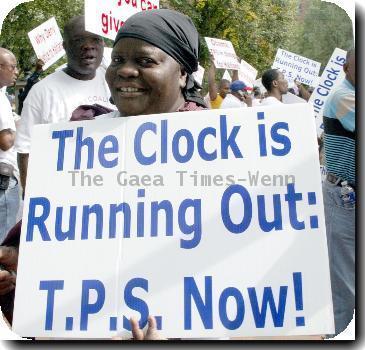Coast Guard says BP in the middle of 1st major cut in latest attempt to contain Gulf leak
By Jane Wardell, APTuesday, June 1, 2010
BP in middle of 1st cut to contain Gulf oil
PORT FOURCHON, La. — Coast Guard Adm. Thad Allen is saying that BP is in the middle of its first major pipe cut in the company’s latest bid to contain the oil spewing into the Gulf of Mexico.
Allen, the national incident commander, said Tuesday that it could be as many as three days before oil can be contained and siphoned to the surface. BP has another major cut to do before a cap can be lowered on to the leak.
It’s the company’s latest attempt to contain the leak. The effort to plug the spill failed over the weekend and the best chance to stop the gusher is now at least two months away.
THIS IS A BREAKING NEWS UPDATE. Check back soon for further information. AP’s earlier story is below.
PORT FOURCHON, La. (AP) — BP lost billions more in market value Tuesday when shares fell steeply in the first trading day since the company failed yet again to plug the worst oil spill in U.S. history, as investors realized the best chance to stop the leak was months away and there was no end in sight to the cleanup.
As hurricane season began on the fragile Gulf Coast, BP settled in for the long-term, and President Barack Obama said the government was ready to step up its response and prosecute if any laws were broken.
With the ambitious “top kill” abandoned over the weekend, BP’s hope to stanch the leak lies with two relief wells that won’t be finished until at least August. The company is, however, trying another temporary fix to contain the oil and siphon it to the surface by sawing through the leaking pipe and putting a cap over the spill.
The cleanup, relief wells and temporary fixes were being watched closely by Obama’s administration. He planned to meet for the first time Tuesday with the co-chairmen of an independent commission investigating the spill, while Attorney General Eric Holder was headed to the Gulf Coast to meet with state attorneys general.
Obama’s energy czar, Carol Browner, said she doesn’t want to guess the prospects for success on BP’s containment cap.
Interviewed Tuesday on ABC’s “Good Morning America,” Browner said, “I don’t want to put odds on it. … We want to get this thing contained.”
Browner also said she’s concerned about the effect the hurricane season, which began Tuesday, could have on ending the environmental crisis.
To accommodate more than 500 workers hired to clean up the spill, BP and several subcontractors have set up floating hotels, or “flotels,” made up of steel boxes resembling oversized shipping containers and stacked atop barges.
At Port Fourchon, the oil industry’s hub on the Gulf , a flotel there is the only way to station workers in a massive shipyard surrounded by ecologically sensitive marshes and beaches.
“There are no permanent residents here on the port,” said Dennis Link, a manager from a BP refinery who’s handling logistics at the 1,300-acre site that’s easily accessible by ship, but reachable on land only by a state road that snakes through the bayous.
On Monday afternoon, the living quarters on the flotel sat empty. Generators pumped in cool air and powered the lights, and at the foot of each bunk sat a towel, washcloth and individually wrapped bar of soap. If necessary, four tents on dry land nearby can house 500 more workers. Workers will likely be trucked in on the two-lane state road.
The accommodations on the barge are Spartan, but comfortable — similar to military barracks. Each pod contains 12 bunks, with a bathroom for every four. Per Coast Guard standards, each resident gets 30 square feet of space in the quarters. The barge has 10 washers, 10 dryers and a kitchen, although food will be served in a tent on land. The quarters are typically floated alongside offshore oil rigs to supplement housing on the drilling operations.
Another flotel sits about 15 miles away, off Grand Isle, and BP plans to establish them elsewhere along the coast.
Meanwhile, the company’s share price, which has fallen steadily since the start of the disaster, took a turn for the worse Tuesday, losing 15 percent to $6.13 in early afternoon trading on the London Stock Exchange.
That was the lowest level in more than a year. The shares have now lost more than a third of their value, wiping some $63 billion off BP’s value, since the explosion at the Deepwater Horizon oil rig six weeks ago.
BP said early Tuesday it had spent $990 million so far on fighting and cleaning the spill, with multiple lawsuits for damages yet to be tallied.
The Coast Guard also announced that it was replacing the admiral who has been the federal on-scene coordinator since the oil rig exploded, though the agency said the change was previously planned. The agency said Rear Adm. Mary Landry will return to duties as commandant of the 8th Coast Guard District in New Orleans to focus on hurricane season preparations.
Cleanup efforts are being ramped up while BP tries the latest of patchwork fixes, this one the cut-and-cap process. The risky procedure could, at least temporarily, increase the oil flowing from the busted well.
Using robot submarines, BP plans to cut away the riser pipe this week and place a cap-like containment valve over the blowout preventer. On Tuesday, live video feeds showed robot submarines using a circular diamond saw to cut pipes at the bottom of the Gulf.
“We are well into the operation to put this cap on the well now,” BP Managing Director Bob Dudley told NBC’s “Today” show on Tuesday.
BP failed to plug the leak Saturday with its top kill, which shot mud and pieces of rubber into the well but couldn’t beat back the pressure of the oil.
The spill has already leaked between 20 million and 44 million gallons, according to government estimates.
For the relief well to succeed, the bore hole must precisely intersect the damaged well, which experts have compared to hitting a target the size of a dinner plate more than two miles into the earth. If it misses, BP will have to back up its drill, plug the hole it just created, and try again.
“The probability of them hitting it on the very first shot is virtually nil,” said David Rensink, incoming president of the American Association of Petroleum Geologists, who spent most of his 39 years in the oil industry in offshore exploration. “If they get it on the first three or four shots they’d be very lucky.”
The trial-and-error process could take weeks, but it will eventually work, scientists and BP said. Then engineers will then pump mud and cement through pipes to ultimately seal the well.
On the slim chance the relief well doesn’t work, scientists weren’t sure exactly how much — or how long — the oil would flow. The gusher would continue until the well bore hole collapsed or pressure in the reservoir dropped to a point where oil was no longer pushed to the surface, said Tad Patzek, chair of the Petroleum and Geosystems Engineering Department at the University of Texas-Austin.
Wardell reported from London.
Tags: Barack Obama, Climate, Coastlines And Beaches, Emergency Management, Energy, Louisiana, North America, Ownership Changes, Personnel, Port Fourchon, United States, Weather Patterns

